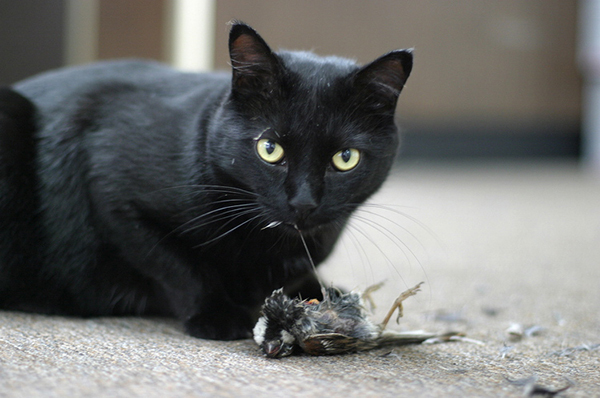Wellington wildlife refuge Zealandia will become little more than a “cat food factory” unless something is done about wandering felines, the Wellington City Council has been told.
Hearings began today for submissions into the council’s draft annual plan, with philanthropist and anti-cat campaigner Gareth Morgan among the first to address councillors.
He urged the council to exert control over the city’s cat population through bylaws, rather than waiting on a law from central government.
The problem wasn’t domestic cats, it was people not keeping control of their cats and letting the pets roam the neighbourhood where they killed native wildlife.
Results on infrared camera research into the habits of suburban cats would be released in a couple of weeks, he said.
“Preliminary results will show that wandering cats outweigh any other predator on a factor of 20-30 to one.”
Local residents trying to make their backyards safe for native wildlife were frustrated they could not catch the “number one predator”, he said.
He advocated councils making micro-chipping mandatory for cats to determine ownership, so un-owned cats could be “zipped” and any pets caught wandering could be returned for a fee. There should also be a 24-hour curfew on cats, with them only allowed out on leashes.
Without restrictions on cats conservation projects like Zealandia would become “the most expensive cat food factory in New Zealand”, he said.
Living Wage advocates also addressed the council, applauding its decision last year to pay direct employees a living wage – defined as the amount needed for the amount for workers to be able to live while also participating in society. When that decision was made the living wage was set at $18.40 but has since been revised to $18.80.
“We really want to commend you for the bold move that you have made. It is a brave decision,” Wellington City Missioner Rev Tric Malcolm said.
The group called on the council to commit to implementing its decision and to look at extending the commitment to contracted workers and council controlled company employees.
Sue Piper from Sports Wellington also presented to the council, urging it to improve regional relationships with regards to sports fields. “Wellington’s got it about right, the issue is the rest of the region.”
Council boundaries did not match sporting boundaries, so their needed to be greater connections around fees and field management.
Haydn Smith from the Alex Moore Park Sport and Community Board outlined plans for a $5 million sports centre at the Johnsonville Park. The plan was to raise $4m from the community, but council support could get it happening sooner than the current five-year timeframe, he said.
Plans would be presented to the council next year for inclusion in the long-term plan.

